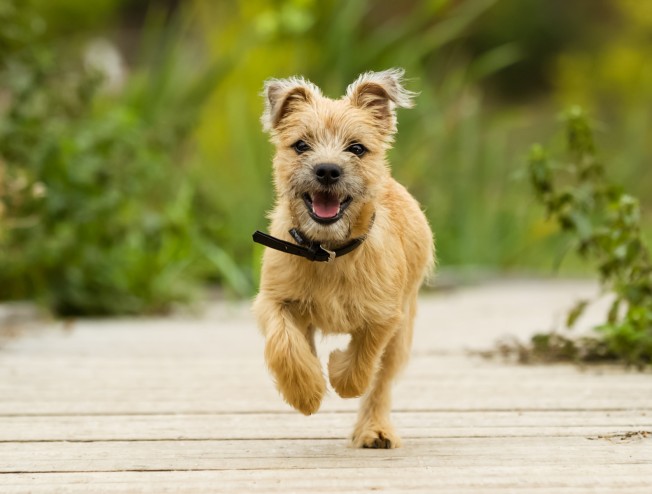Keeping your child safe is a parent's primary responsibility. That means not just safeguarding them but also teaching them how to behave and how not to behave around animals.
The majority of dog-related injuries and attacks occur in someone's home. And the majority of those attacks involve children ranging from infancy to age 9. You need to know how to protect your children from these risks, whether you own a dog or not.
Because children are vulnerable, too small and weak to defend themselves, and do not understand how to behave appropriately and safely around dogs, they must be taught how to behave when a dog is present. For example, children might think it's a game to pull a dog's ears, hit a dog open-handed or with a fist, or permit a dog to snatch food from their hands. It is important for every parent to recognize and avoid situations that present higher risks, as well as teach their children how to treat animals safely and gently.
Safety Recommendations:
?Never leave an infant or toddler unattended with any dog, no matter how docile you think the animal may be. A toddler, unsteady on its feet, for example, might fall backwards onto the dog or grab onto its face or ears for balance. A startled dog might snap reactively, particularly if the primary owner is not in sight.
?Never permit your young children to feed a dog unless supervised. Dogs can be very possessive about their food and if a child is handling their dish instead of the primary owner who customarily feeds the dog, the dog may think the child is actually interfering with his food and defend it by attacking.
?Never let a young child walk a dog unless supervised. They lack the strength to control a dog if it pulls, and if it engages another animal or person in an attack for any reason, the child might attempt to intervene and get injured.
?Never allow a child to discipline a dog. Discipline should only be administered by the adult who is the dog's owner, as he/she is the 'top dog' in the pecking order as far as the dog is concerned. Until a dog is trained to accept orders from an older child by that primary owner, the dog will not necessarily feel he must take orders from someone else and may rebel.
?Never let your children grab or yank on a dog's collar, or engage in any rough play. A dog's basic instinct is to snap if annoyed or startled and the child could get injured.
In a recent study, children aged 0 to 9 represented the greatest percentage of victims in dog-related injuries.1 Most often those injuries were head injuries requiring hospitalization.
Age group # victims % of group
0-9 98 23.7%
10-19 29 7.0%
20-29 37 8.9%
30-39 35 8.5%
40-49 34 8.2%
50-59 43 10.4%
60-69 41 9.9%
70 + 97 23.4%
Any dog, sufficiently provoked, may attack. This behavior is not limited to breeds commonly considered to be high risk; neither is it limited to dogs who regularly exhibit aggressive behavior, although that does increase the likelihood. A dominant dog may attack if it thinks someone is coming between it and its food, especially when in its own territory.
To protect your family, especially your children, teach them to follow these basic rules when dealing with any dog:
1. Never pet or touch a dog you do not know, even if the owner is there.
2. Do not touch any dog while it's eating or sleeping.
3. If a dog chases you while riding your bike, immediately stop your bike and stand still.
4. Never enter someone else's property where a dog lives to retrieve a ball or toy, even if you know the dog.
5. Do not approach a dog with puppies.
6. Never go near a dog that has been tied up.
7. Never yank or even touch a dog's tail or ears, even if you know it.
8. Never bait or tease a dog, or anger it.
9. If a dog runs toward you while barking, freeze and cover your face with your hands.
10. If a dog runs at you and knocks you down, roll into a ball and cover your face with your arms, and freeze-don't move a muscle and do not try to get to your feet.
A dog attack is a frightening experience, often creating a lifelong fear in the victim. Learn and follow these guidelines, and teach them to your children, and you'll reduce the likelihood of ever facing such an experience. You'll be glad you did.
1 "Dog-related injuries" study, September 2005, Australia Institute of Health and Welfare, Flinders University, South Australia

 Sharing Your Home With A Skink
Sharing Your Home
Sharing Your Home With A Skink
Sharing Your Home
 Why It Is Important Not To Over-exercise Puppies
Why It Is Importa
Why It Is Important Not To Over-exercise Puppies
Why It Is Importa
 Smells That Dogs Really Don’t Like
Smells That Dogs
Smells That Dogs Really Don’t Like
Smells That Dogs
 Why visit Animal Hospital in South Arlington
Why visit Animal Hospital in South Arlington
A
Why visit Animal Hospital in South Arlington
Why visit Animal Hospital in South Arlington
A
 Are Flea And Tick Preventives Safe?
In the spring of 2009, the EPA announced that it would i
Are Flea And Tick Preventives Safe?
In the spring of 2009, the EPA announced that it would i